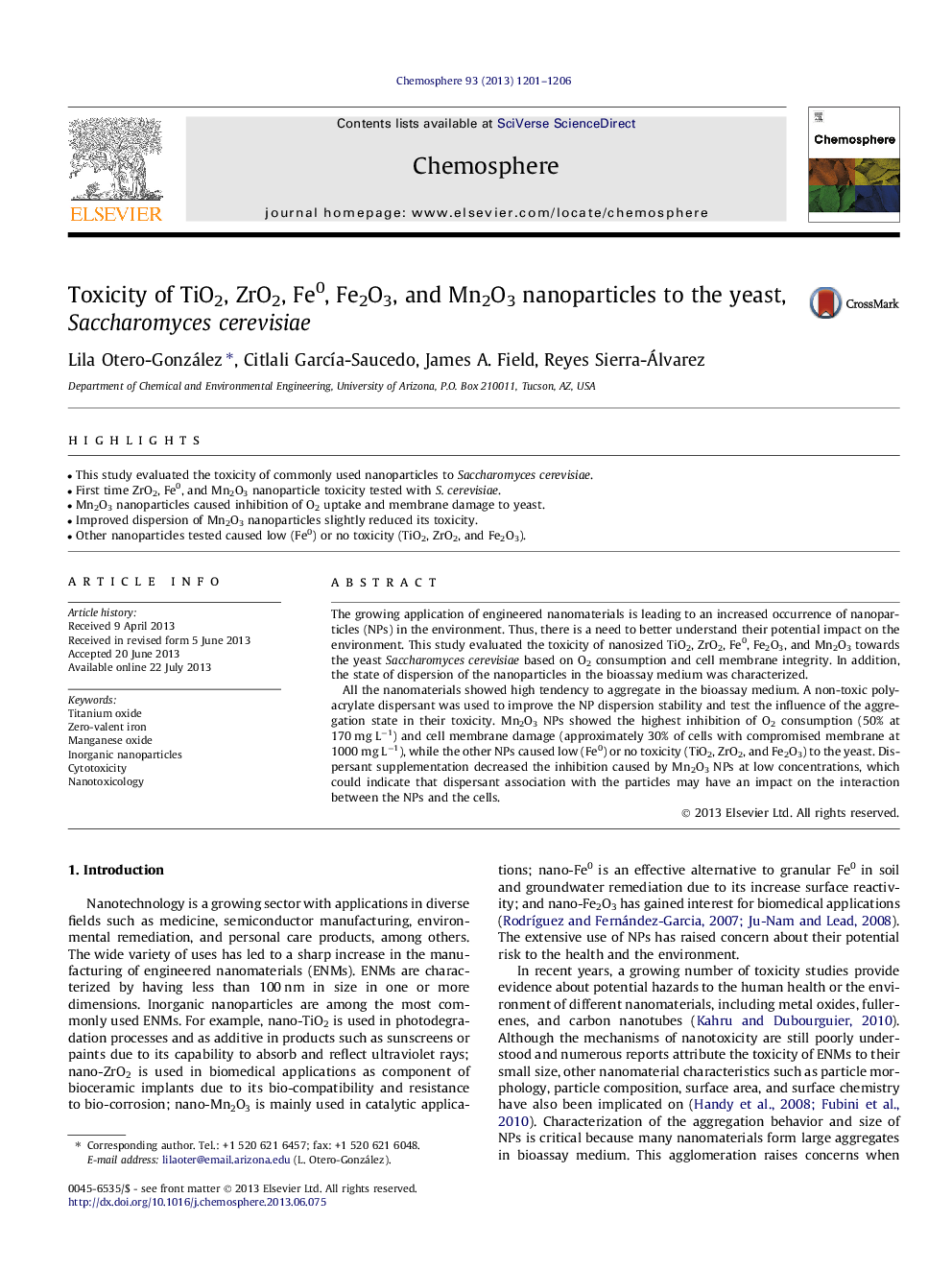| Article ID | Journal | Published Year | Pages | File Type |
|---|---|---|---|---|
| 6310374 | Chemosphere | 2013 | 6 Pages |
â¢This study evaluated the toxicity of commonly used nanoparticles to Saccharomyces cerevisiae.â¢First time ZrO2, Fe0, and Mn2O3 nanoparticle toxicity tested with S. cerevisiae.â¢Mn2O3 nanoparticles caused inhibition of O2 uptake and membrane damage to yeast.â¢Improved dispersion of Mn2O3 nanoparticles slightly reduced its toxicity.â¢Other nanoparticles tested caused low (Fe0) or no toxicity (TiO2, ZrO2, and Fe2O3).
The growing application of engineered nanomaterials is leading to an increased occurrence of nanoparticles (NPs) in the environment. Thus, there is a need to better understand their potential impact on the environment. This study evaluated the toxicity of nanosized TiO2, ZrO2, Fe0, Fe2O3, and Mn2O3 towards the yeast Saccharomyces cerevisiae based on O2 consumption and cell membrane integrity. In addition, the state of dispersion of the nanoparticles in the bioassay medium was characterized.All the nanomaterials showed high tendency to aggregate in the bioassay medium. A non-toxic polyacrylate dispersant was used to improve the NP dispersion stability and test the influence of the aggregation state in their toxicity. Mn2O3 NPs showed the highest inhibition of O2 consumption (50% at 170 mg Lâ1) and cell membrane damage (approximately 30% of cells with compromised membrane at 1000 mg Lâ1), while the other NPs caused low (Fe0) or no toxicity (TiO2, ZrO2, and Fe2O3) to the yeast. Dispersant supplementation decreased the inhibition caused by Mn2O3 NPs at low concentrations, which could indicate that dispersant association with the particles may have an impact on the interaction between the NPs and the cells.
